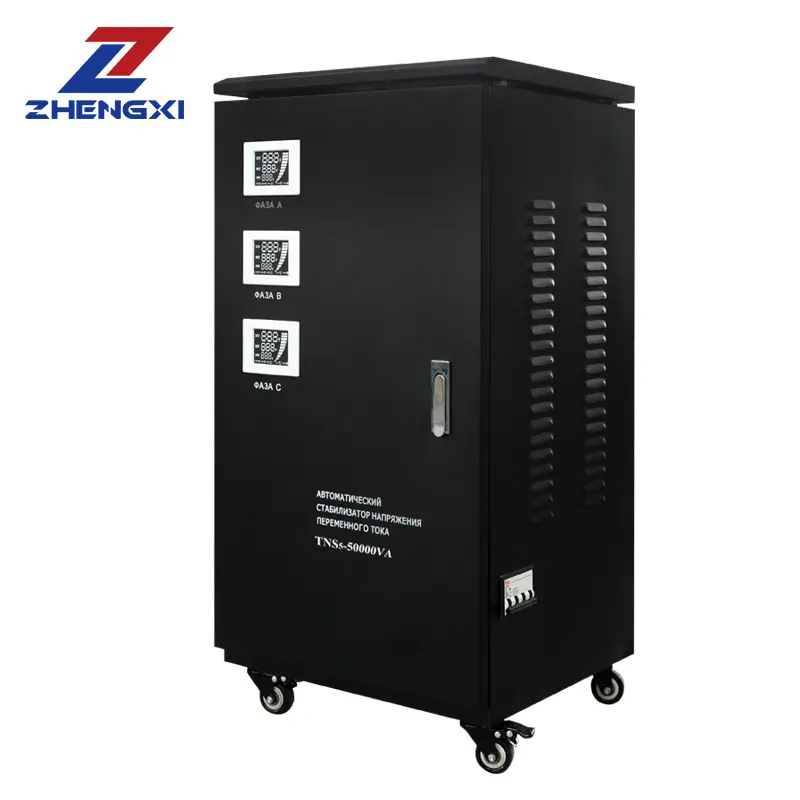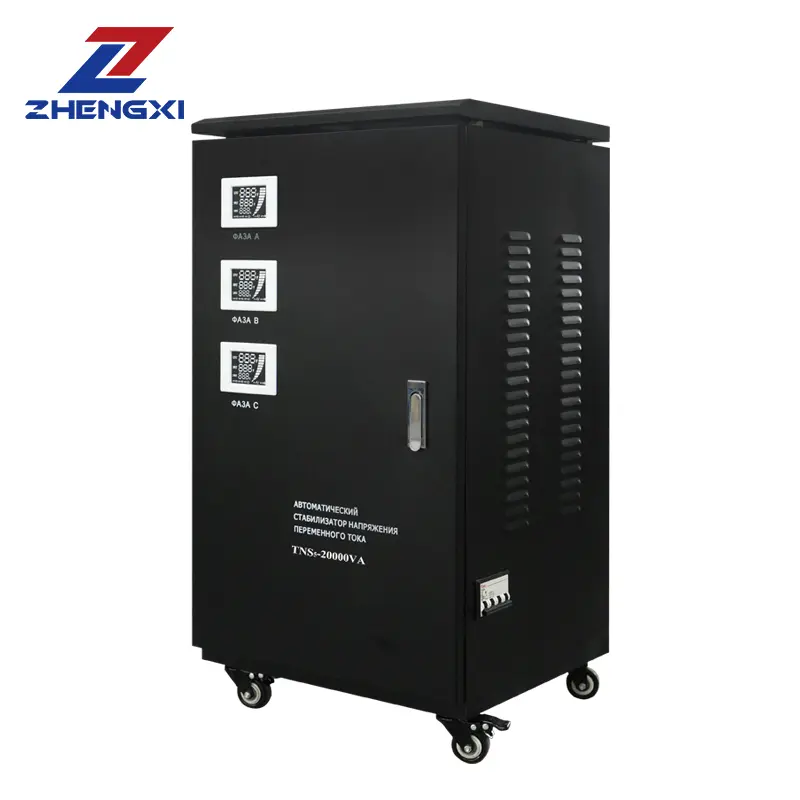When it comes to managing power distribution in industrial and commercial settings, ensuring voltage stability is critical. A 3-phase voltage regulator is a vital tool for protecting sensitive electrical equipment from the risks of voltage fluctuations. Whether in manufacturing plants, commercial facilities, or large-scale infrastructure, this device plays a key role in ensuring a consistent and reliable power supply.
In this blog, we will explore the benefits, features, and essential considerations when selecting a 3-phase voltage regulator. With a clear understanding of its purpose and advantages, you’ll be better equipped to choose the right solution for your power stabilization needs.
What is a 3-Phase Voltage Regulator?
A 3-phase voltage regulator is a device that stabilizes the voltage supplied to a 3-phase electrical system. These systems are commonly used in industrial, commercial, and large-scale residential applications, where the load demands are high, and power quality is essential.
In a 3-phase AC voltage regulator, the device continuously monitors the input voltage and automatically adjusts it to a stable level, ensuring the voltage remains within a specified range, usually ±1% to ±3%. This is particularly important in areas where the power supply is prone to surges, dips, or other disturbances that could affect the performance of machinery, equipment, or even safety systems.
Applications of a 3-Phase Voltage Regulator
A three-phase stabilizer is crucial in various industries where power quality and stability are critical. Key applications include:
- Industrial Machinery: Protects motors, CNC machines, and other large equipment from voltage fluctuations that can cause malfunction or damage.
- HVAC Systems: Ensures stable voltage for air conditioning systems, which often have high start-up and running power demands.
- Laboratories and Medical Equipment: Maintains consistent power to sensitive equipment that requires exact voltage levels for accurate readings and reliable operation.
- Data Centers: Prevents power instability from affecting servers, networking equipment, and other critical infrastructure.
- Pumps and Compressors: Stabilizes voltage to prevent overloading or inefficient operation in high-demand machines.
Key Features and Benefits of a 3-Phase Voltage Regulator
- Voltage Stability and Protection: Ensures that the voltage output is within a safe operating range, preventing overvoltage or undervoltage damage to equipment.
- Automatic Regulation: Constantly monitors and adjusts the voltage supply to match the requirements of connected equipment.
- High Efficiency: Designed to minimize energy losses, these regulators provide efficient power conditioning, reducing operational costs.
- Advanced Protection Mechanisms: Built-in protection against overcurrent, overloads, and temperature extremes ensures the long-term reliability and performance of your equipment.
- Durable and Robust Construction: Designed for industrial-grade environments, these regulators are typically housed in heavy-duty enclosures that can withstand harsh conditions.
- Simplicity and Ease of Installation: The device is easy to install and requires minimal maintenance, offering a seamless integration into existing electrical systems.
How Does a 3-Phase Voltage Regulator Work?
A 3-phase voltage stabilizer uses a variety of methods to adjust the input voltage to the desired level. Some of the common types include:
- Servo Motor-Controlled Voltage Stabilizers: These use a motor-driven variable transformer to adjust the voltage in real time.
- Solid-State Voltage Regulators: These rely on electronic components to regulate the voltage with fast response times and minimal noise.
- Mechanical Relay Stabilizers: These are designed for simpler applications, adjusting voltage using relay switches but are less common in industrial environments.
No matter the type, the core function remains the same: the stabilizer continuously monitors the incoming power and adjusts the voltage output to match the required level, offering a reliable solution for power stability.
Technical Specifications to Consider
When selecting a 3-phase voltage regulator, consider the following key specifications:
| Specification | Description |
|---|---|
| Voltage Range | Typically 380V, 400V, or 415V (customizable) |
| Frequency | 50Hz/60Hz |
| Input Voltage | 304V – 456V |
| Output Voltage | 380V ±1-3% (customizable) |
| Protection Features | Overload, overvoltage, short circuit, and over temperature protection |
| Control Type | Servo motor, digital correction, or hybrid |
| Efficiency | ≥95% |
| Load Type | Industrial, commercial, or residential |
How to Choose the Right 3-Phase Voltage Stabilizer
- Determine the Required Load Capacity: Calculate the total wattage of all devices connected to the stabilizer. For heavy-duty equipment or motors, consider the startup load, which can be several times higher than the continuous running power.
- Choose the Correct Voltage: Ensure the stabilizer matches the supply voltage. Common voltages include 380V for industrial systems and 230V or 240V for residential setups.
- Understand Power Factor: The power factor determines how efficiently your equipment uses electricity. A power factor of 0.8 to 1.0 is common in most applications. Higher power factors reduce the size of the stabilizer required.
- Select the Right Features: If you’re working in a demanding environment, select a stabilizer with advanced protection features such as overload, short circuit, and temperature protection.
- Consider Future Expansion: It’s always advisable to choose a stabilizer with a higher capacity than needed to account for future equipment additions or increases in load demand.
FAQ
Q1: What is the difference between a 3-phase and a single-phase voltage regulator?
A1: A single-phase voltage regulator is used for smaller systems with one-phase input and output, suitable for residential or light commercial applications. A 3-phase voltage regulator is designed for larger systems, providing power stability for industrial or commercial equipment that requires three-phase power.
Q2: Can a 3-phase voltage stabilizer be used for sensitive equipment?
A2: Yes, 3-phase stabilizers are designed to protect sensitive equipment, such as IT infrastructure, medical devices, and industrial machinery, from voltage fluctuations. Some models come with advanced features like harmonic filtering and fast response time to ensure high-quality power delivery.
Q3: How do I calculate the required size of a 3-phase voltage stabilizer?
A3: To calculate the required size, add up the total wattage of all connected devices and apply a safety margin (typically 20-30%). For inductive loads such as motors, the stabilizer’s power rating should be 2-3 times the rated load. Always ensure the stabilizer can handle the startup load, which can be 2-3 times higher than the continuous load.
Conclusion
In industries where power quality is critical, a 3-phase voltage stabilizer is essential for ensuring the safety and efficiency of electrical equipment. Whether you’re protecting sensitive machinery or ensuring stable power for large-scale operations, these stabilizers provide a reliable solution to prevent damage caused by voltage fluctuations.
At ZHENGXI, we offer a range of high-quality 3-phase voltage stabilizers designed to meet the needs of diverse applications. Our products are built with advanced protection features, ensuring maximum reliability and longevity for your electrical systems.



